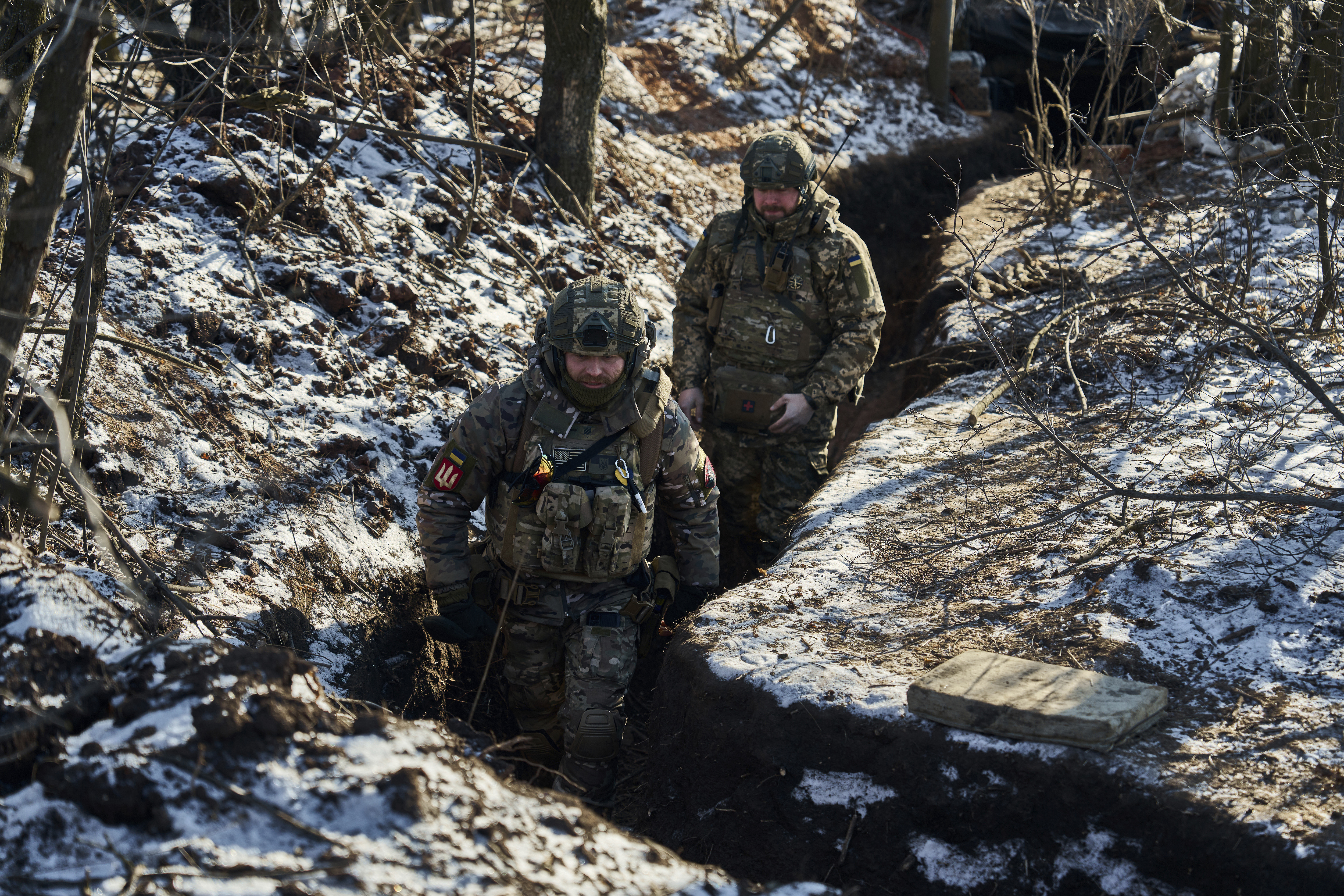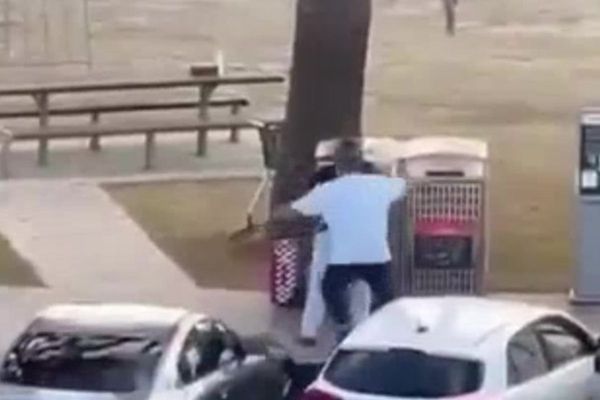
Russia appeared to make marginal territorial gains in Ukraine’s eastern regions during the 50th week of the war, as it threw new recruits into the front lines to probe defences with widely dispersed attacks, sometimes with devastating casualties for its troops.
“We’ve observed that the Russian occupation forces are redeploying additional assault groups, units, weapons, and military equipment to the east,” Ukrainian military intelligence representative Andriy Chernyak told the Kyiv Post on February 1.
Their orders were to capture the remaining parts of Luhansk and Donetsk provinces, known as the Donbas, by March, Chernyak said.
Ukrainian presidential office adviser Mykhailo Podolyak said there were about 100 combat clashes a day along the entire front line.
Ukrainian troops appeared to have lost ground at the northern end of the 800km (500-mile) front, in Kharkiv – ground they had won back in a sweeping counteroffensive last September – where Russian forces claimed to have captured the settlements of Synkivka and Dvorchine.
Further south, Russian forces carried out a record number of artillery strikes from Kreminna in the direction of Lyman, Ukraine’s eastern forces spokesman said on February 3. A series of offensives followed, in which Russian military reporters claimed their country’s forces had pushed as far as Yampolivka, 16km (10 miles) west of Kreminna.
Fierce fighting continued to rage through the week in Bakhmut, a town at the centre of the eastern front which Russian forces have been trying to capture since last summer.
A Ukrainian commander told a Western reporter its defenders could hold out for “one or two more months”.
Michael Kofman, director of Russia studies at the Center for Naval Analyses, a research organisation, wrote that the situation around Bakhmut “increasingly looks precarious for the Ukrainian Army, and I wouldn’t be surprised if they ultimately withdraw from the city”.
“I’ve often had to say the situation at the front is tough and is getting tougher, and it’s that time again,” Ukrainian President Volodymyr Zelenskyy said on February 4 in a nightly video address.
But the fiercest fighting took place at the southern end of the front, where Russian forces reportedly committed six battalion tactical groups to Vuhledar, a coal-mining town in the Donetsk region, throwing Ukrainian fighters onto the defensive.
A three-day battle for Vuhledar culminated on February 6, when Ukraine’s military reported it had killed more than 1,000 Russian soldiers in a day, and destroyed 14 tanks and 28 armoured personnel carriers – an extraordinary toll. According to a Ukrainian reserves officer, some 30 of those vehicles were damaged or destroyed in the Vuhledar area.
Russia also claimed heavy Ukrainian losses.
Al Jazeera was unable to independently verify the tolls.
Video from the area showed Ukrainian forces destroying two Russian T-90 tanks. These are Russia’s latest and best, equipped with sensors alerting tank crews when they are targeted.
More tanks, faster
Sensing the urgency of the situation, Ukraine’s allies, which had held back promises of battle tanks until late January, were feverishly preparing the vehicles for combat and pledging more.
The first of four Canadian Leopard 2A4 tanks have arrived in Poland.
Germany, which had delayed announcing its first batch of 14 Leopard 2A4 tanks, additionally pledged 100 Leopard 1A5 tanks, bringing the total tanks allies have promised this year to 223.
Pledges from Portugal, Norway and Spain to deliver about two dozen tanks were understood to be pending, while Germany may yet provide more. Other Baltic and North Seas countries were said to be pondering pledges. Ukraine has requested at least 300 tanks to liberate its territories.
Ukraine also received other reinforcements.
US President Joe Biden announced a $2.2bn military aid package, including artillery rockets, howitzer and mortar shells, Javelin anti-tank systems, air defences, heavy machineguns and mine-resistant vehicles.
Norway pledged $730m in military and humanitarian assistance to Ukraine over five years, spending some of its windfall oil and gas profits occasioned by the war.
Ukraine was even reported to be importing mortar bombs from Azerbaijan in an ever-widening effort to obtain the ammunition it needs.
Switzerland’s parliament is reviewing the country’s tradition of neutrality, which goes back to the Napoleonic Wars. An arms manufacturer, Switzerland has been under increasing pressure from Western allies to allow its weapons to be given to Ukraine.
“We shouldn’t have the veto to stop others [from] helping Ukraine. If we do that, we support Russia, which is not a neutral position,” FDP party leader Thierry Burkert told the Reuters news service.
During a rare trip abroad on February 8, Zelenskyy told a full session of the British Parliament why not only tanks but fighter jets would be of paramount importance for Ukraine’s defence in the coming months.
“In Britain, the king is an air force pilot, and in Ukraine, every air force pilot is a king,” he said. “I will be leaving Parliament today thanking all of you in advance for powerful English planes.”
Time is of the essence
Ukraine is not expected to field any of the new tanks until late March.
Defence Minister Oleksiy Reznikov believes that will leave Ukraine to face a new Russian onslaught with what it has got for at least a month.
“Given that Russians live in symbolism, they will try something around February 24,” he said.
Others believe the incursion will come sooner – mid-February, says the governor of the Luhansk region, Serhiy Haidai.
“We are seeing more and more [Russian] reserves being deployed in our direction, we are seeing more equipment being brought in … They bring ammunition that is used differently than before – it is not round-the-clock shelling any more. They are slowly starting to save, getting ready for a full-scale offensive,” Haidai told Ukrainian television.
Zelenskyy believes the offensive is already under way. “I think it has started,” he said on January 30.
He may be right.
Russia’s only mobile service provider in Luhansk shut down its mobile internet service on Moscow’s orders on February 2.
“In this way, the enemy wants to ensure the secrecy of their movement during military operations, because the Russians know that their every step is tracked by the locals and transmitted to the armed forces,” the Ukrainian resistance centre said.
Can Ukraine hold out?
Reznikov told BMFTV that Russia had mobilised half a million new troops, not 300,000, as stated by the Russian defence ministry.
Russia “can attempt a two-axis offensive: it can be Donbas and it can be the south”, Reznikov said.
“The Ukrainians will be assessing Russian capacity to undertake these attacks,” said Major-General Mick Ryan in War Shorts, a podcast.
Expressing a consensus among military experts, he believed Russia could not sustain a new offensive.
“The Russians have lost a huge number of soldiers and contractors in the last couple of months, in particular junior and mid-ranking leaders. So even the injection of one or two hundred thousand mobilised troops isn’t going to rebuild the Russian army. Indeed it’s going to make their challenge more compelling, because commanding 150 junior soldiers that don’t have a lot of training is a pretty big ask for the remaining leaders who remain in the Russian army in Ukraine,” said Ryan.
Kofman believed Russia’s “force quality appears relatively low” and “can likely offer a stubborn defence, but [is] less liable to be suitable for offensive operations”.
Britain’s Ministry of Defence said Russia was “almost certainly” trying to capture the remaining Donbas, but was unlikely to succeed with “undermanned, inexperienced units” because “Russia, too, now lacks the munitions and manoeuvre units required for successful offensives”.
But some military experts say the real problem is Western unease over arming the Ukrainians to win.
“If the fighting drags on through the spring and summer and Ukraine inflicts enormous casualties on Russia while liberating substantial territory, it will become increasingly difficult for Zelensky to grant Putin a face-saving exit from the war and permit Russia’s continued but temporary occupation of Crimea,” wrote Lt Col Alexander Vindman, a retired US Army officer.
“Washington should give Ukraine the weapons and assistance it needs to win quickly and decisively in all occupied territories north of Crimea — and to credibly threaten to take the peninsula militarily,” Vindman said.







